Fidget spinners are like yo-yos and Beyblades before them, a simple little toy or gizmo that, for reasons unknown, have become intensely fascinating to five to ten-year-olds. The small toy initially marketed as a stress-reliever and to help focus those with ADHD or anxiety has been co-opted by small children with pocket money to blow and a load of Ribena down the front of them.
Crazes come and go, but it’s often inexplicable why and how they peak, before they bubble away. Fidget spinners, in 2017, are a certifiable capital-c Craze. And I do not understand them at all.
Videos by VICE

And so I went to Rye Lane in south London, home to hundreds of repurposed mobile phone unlocking stalls that are now selling fidgets by the bucket load, to try to decode the mystery of the spinner.

If anyone understands crazes, it’s mums, so I sought some out at the nearest playground. This young mother (left) describes how the devices have amassed in her five-year-old son’s school, saying that when he uses his spinner he becomes “entranced”.
“It’s hard to know why he’s become so obsessed,” she explains. “He can’t even really spin them properly, yet he’s still so intense.” How can one be entranced by something that doesn’t even function for them? She shakes her head, beaten. How can we better understand fidget spinners? “We never will,” she says, apocalyptically. “But fortunately they’ll be gone soon.”
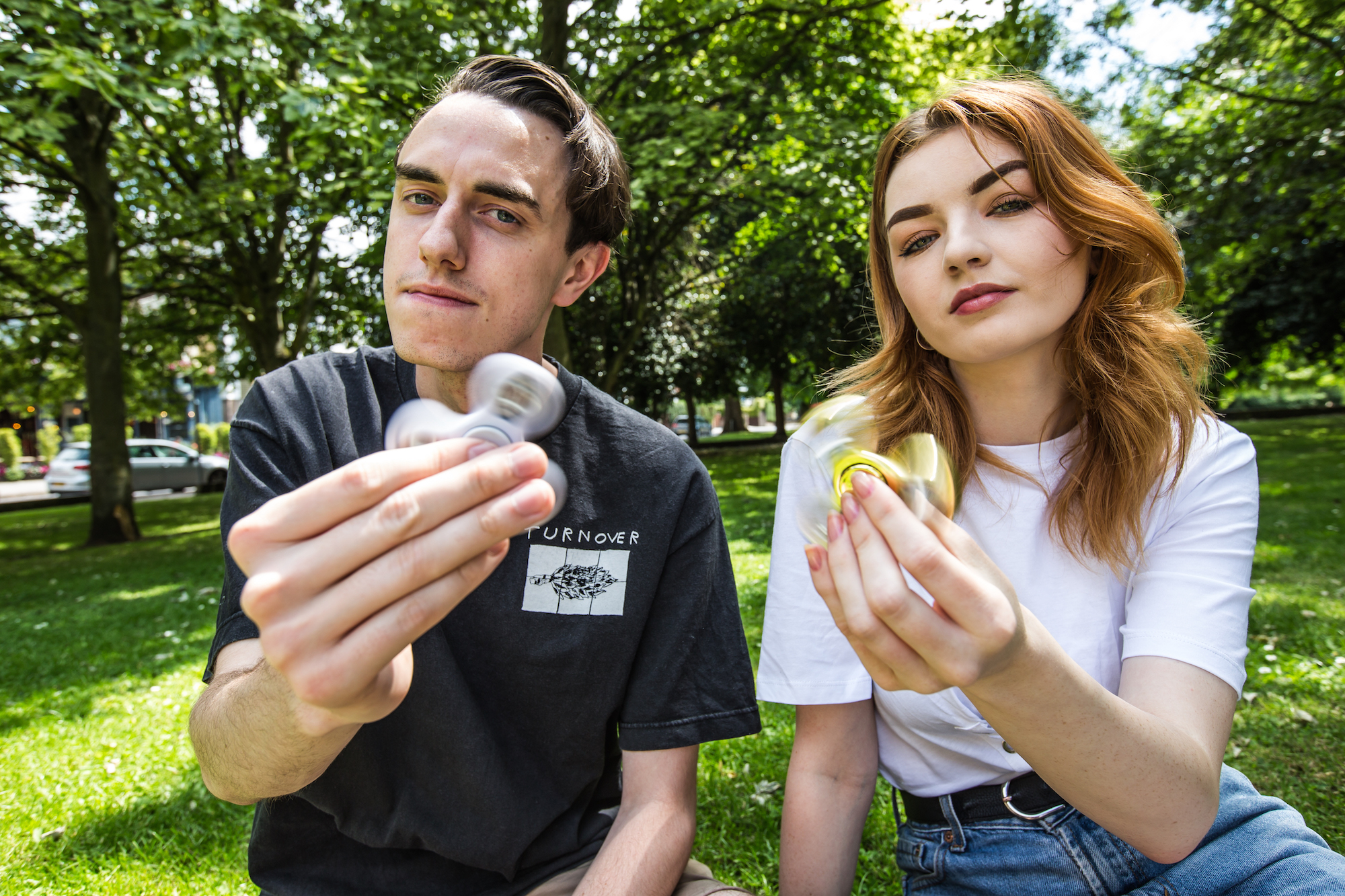
Well, don’t say that too loud, mum, because it’s not just the hearts of the playground that have been captured; it’s hip young millennial couples. Like Tom and Hannah, who have been fidgeting for “nearly three weeks”.
“I was at Primavera last week, and all of my friends bought beautiful metallic spinners. Me too. So this is an international spinner,” Hannah says, while spinning at me.
“During Aphex Twin at Field Day,” Tom adds, “somebody in front of me had a light-up one, and I was watching that more than his very, very expensive light show.”
But how long can a small hunk of plastic keep real, actual, grown-up people entertained? “Well, I’m definitely not bored yet,” Tom says. “I always think I am… Then I spin it again.”

So with the boundaries seeming limitless for these metallic meddlers, have they found their way into the bedroom yet? “They have not,” Hannah confirms. “I did see an advert with one with a butt plug attached, but no, I don’t own that.” Tom is looking sheepish. Reveal your truth, Tom.
“I did try to spin it on my dick the other day,” he says. “It was when Hannah was away.” And did it thrive in these conditions? “It did not. But I think that says more about me than the spinner.”
Clearly there is a primal energy about the spinner that we just cannot explain: it draws us towards it, even dick-first; it hypnotises, it entrances. But how does one understand one? “It’s simple,” says Tom, stopping the spinner. “Just spin.”
Spin. Was it that simple? Could this naïve reporter’s world be turned with one simple rotation?
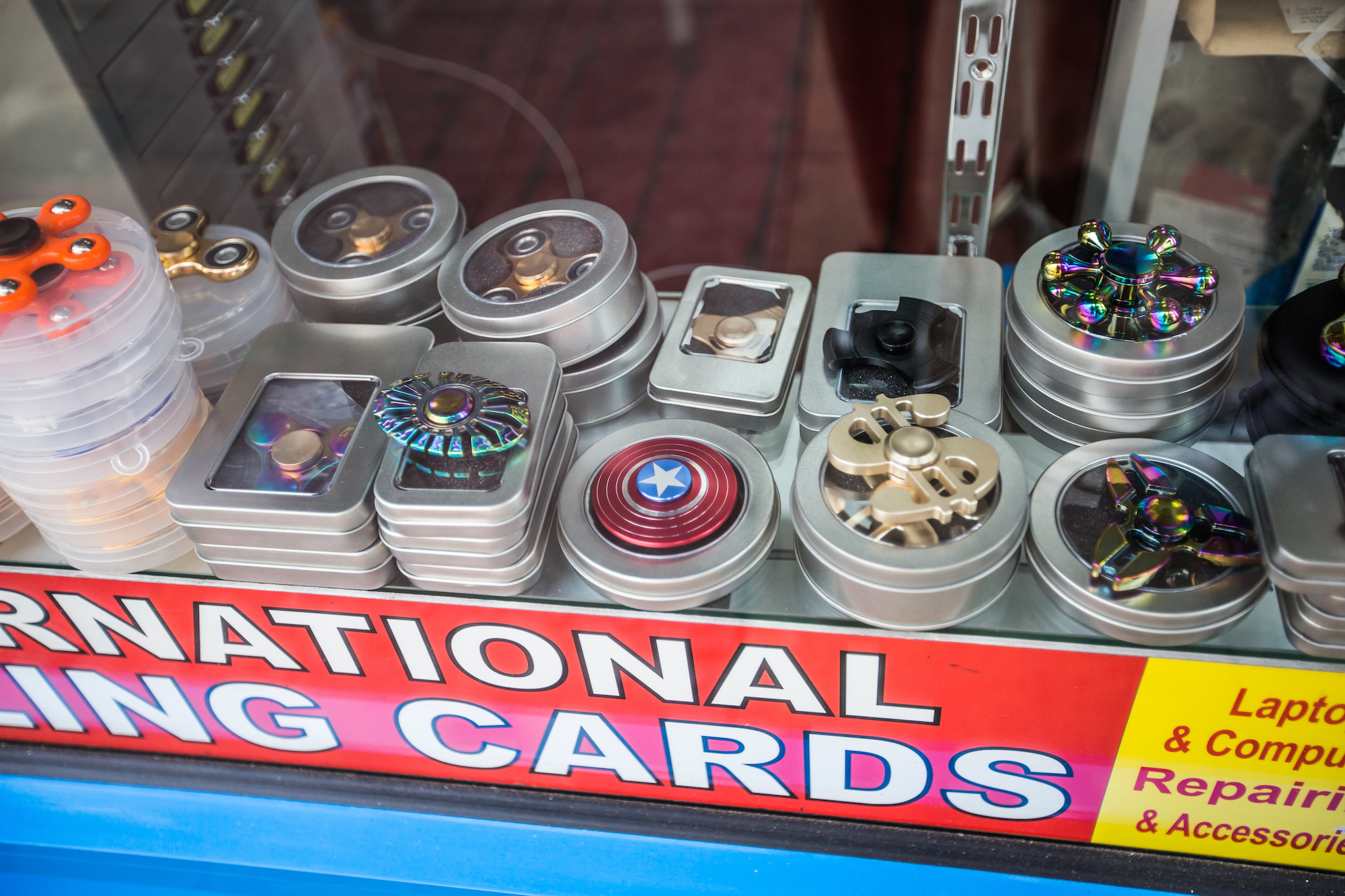
I decide to make the same pilgrimage the Rye Lane shopkeeper tells me up to “two or three hundred kids a day” had made to his shop already this month.
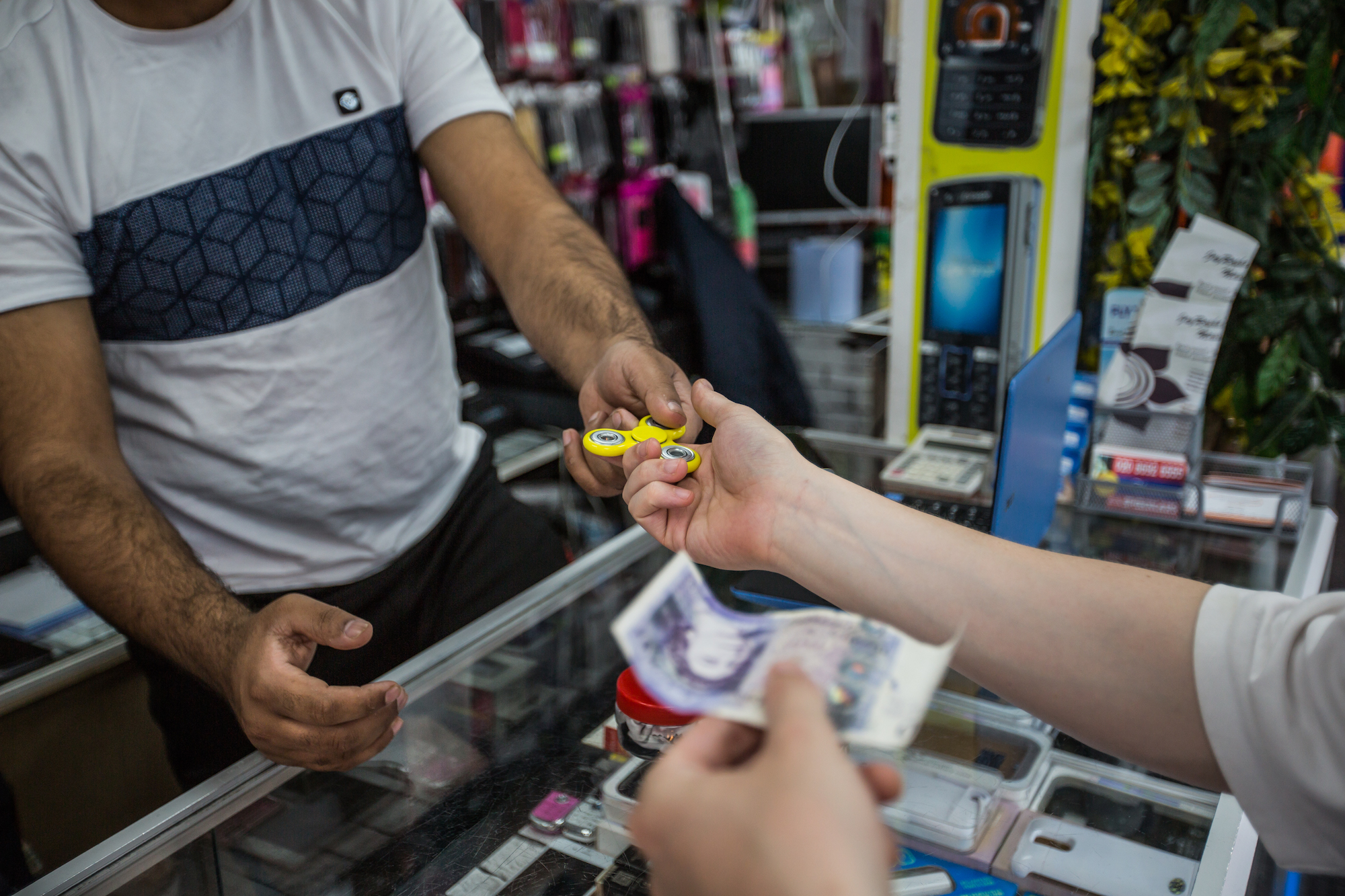
Holding my newly bought spinner – such a small, precious thing – it begs the question: what is the big deal?

Heeding the words of both mothers and Tom alike, it is becoming abundantly clear.
To understand fidget spinners.

One must.
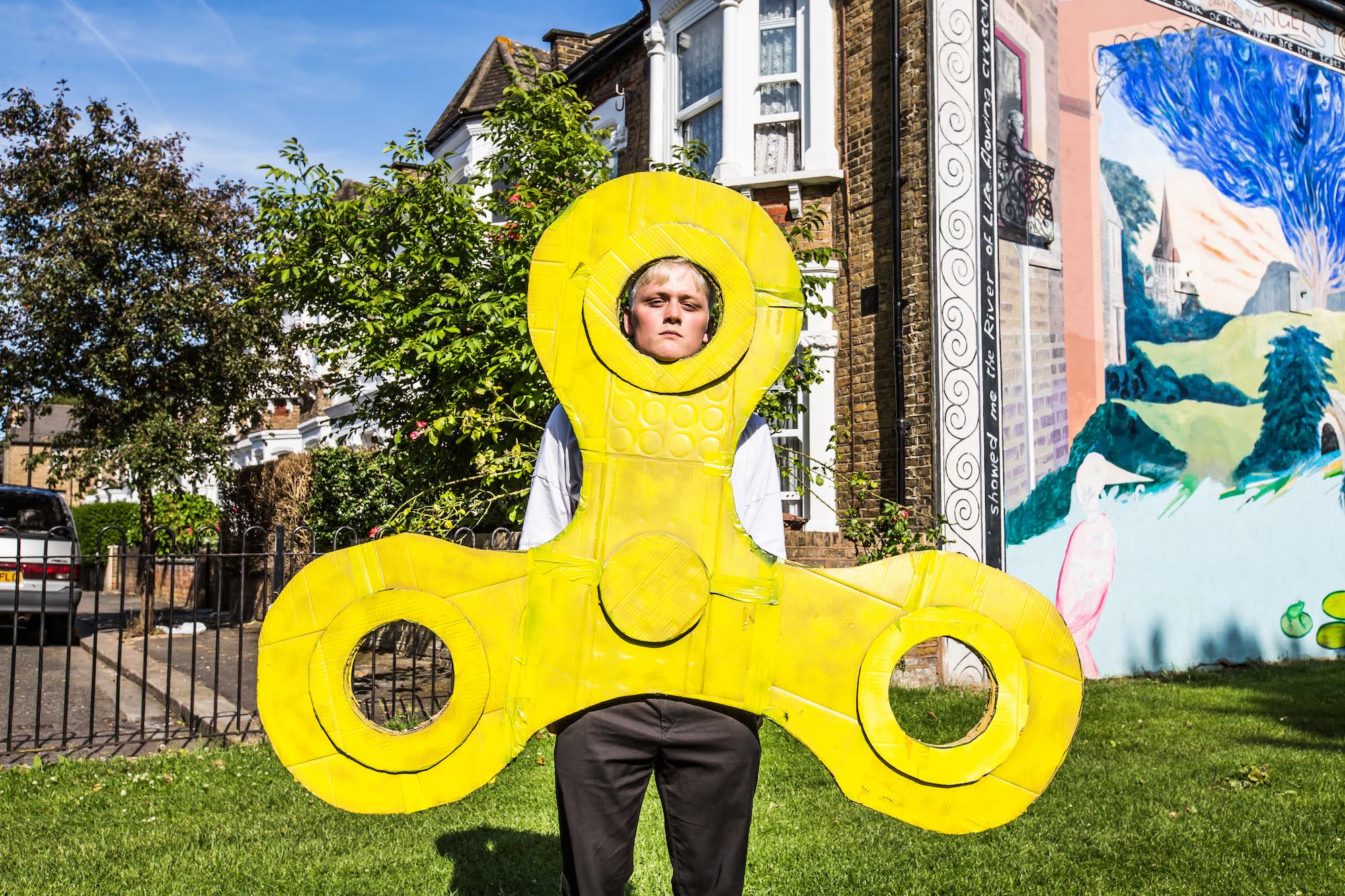
Become one.
Only then can any reporter truly measure the extent to which they are shaping our world and high streets.

It has been argued that spinners can “relieve stress” – to take away some of the challenges we encounter in day-to-day life.

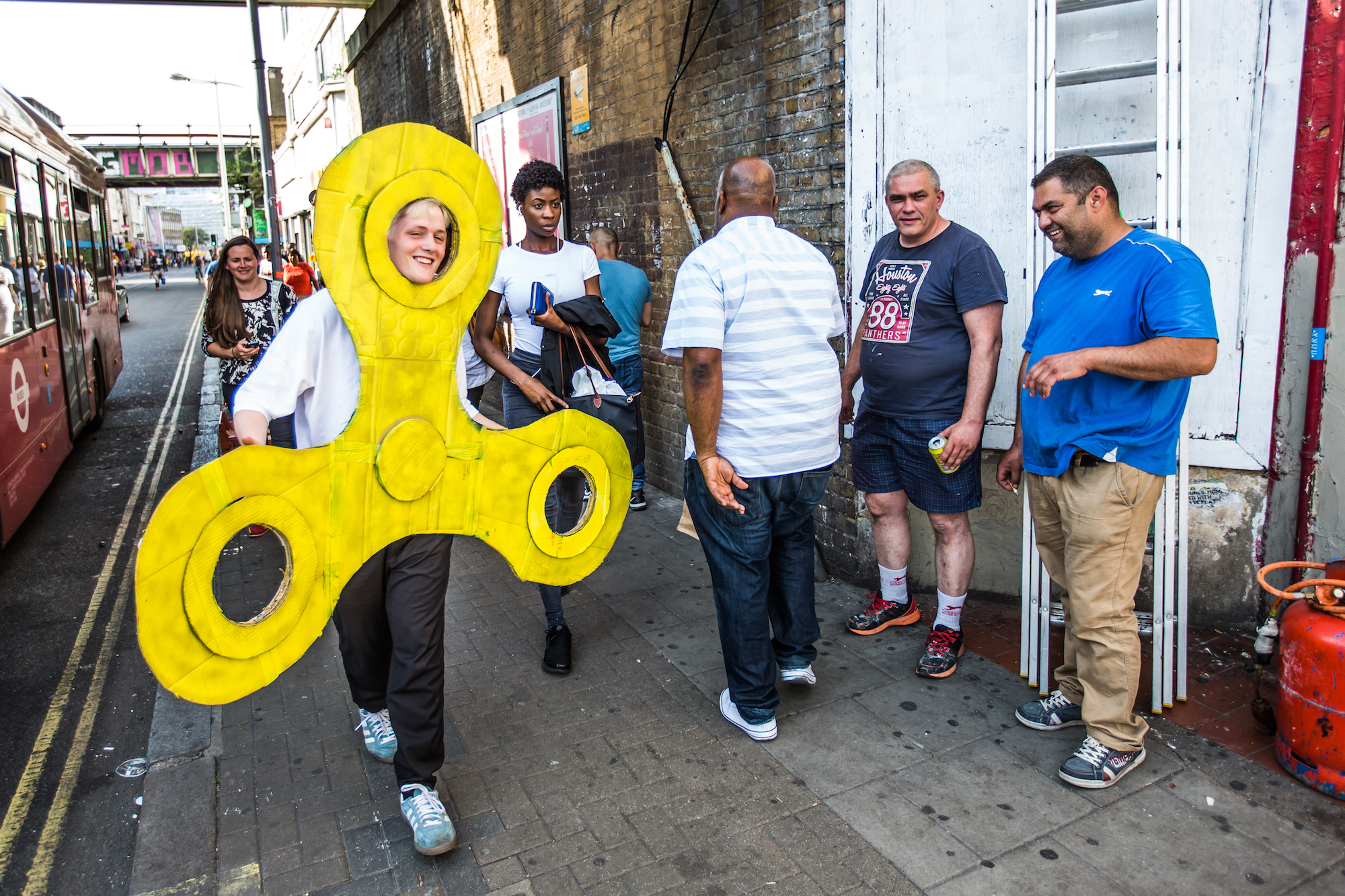
That a simple mess around with one can really bring light to one’s life.


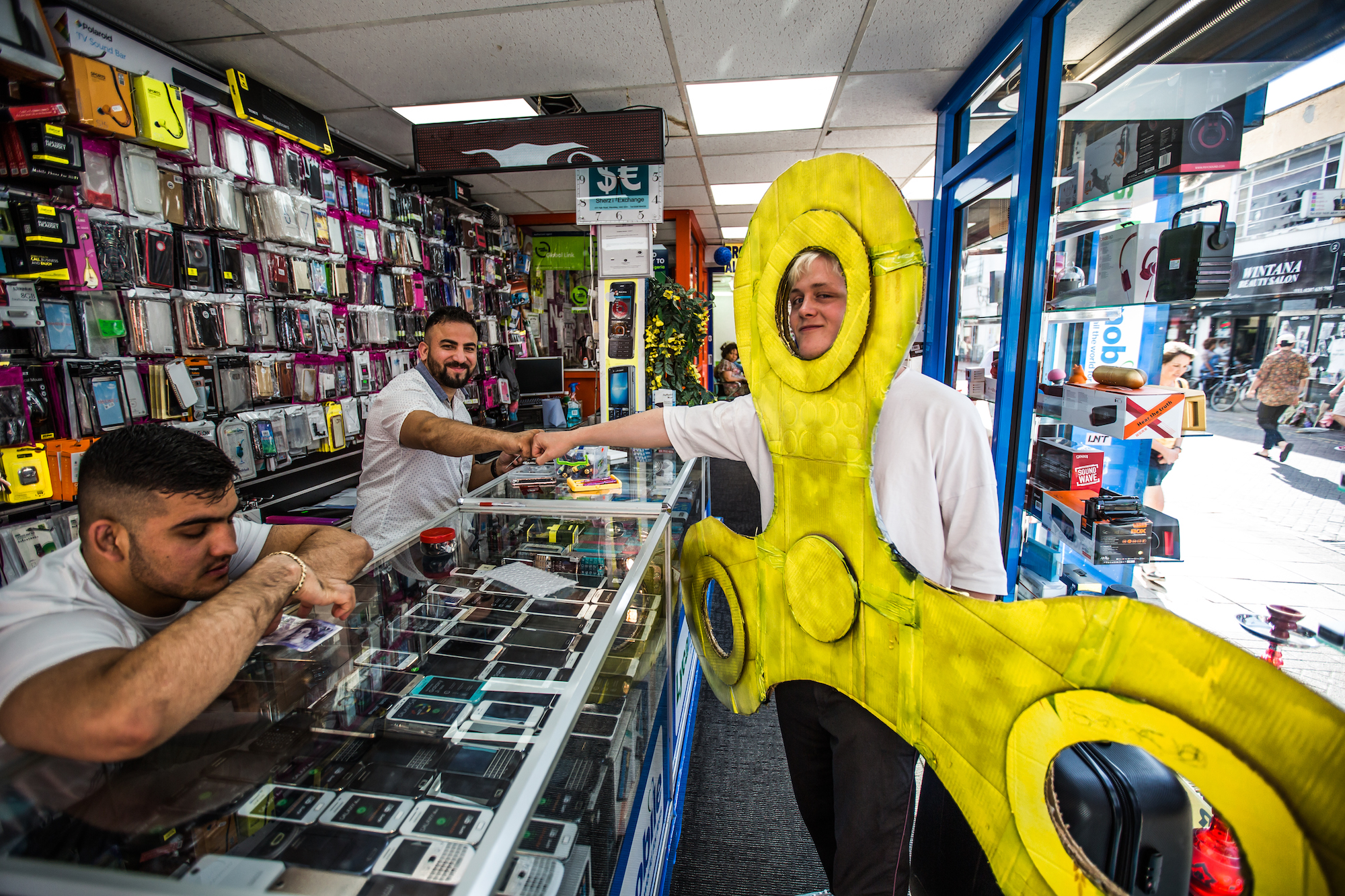
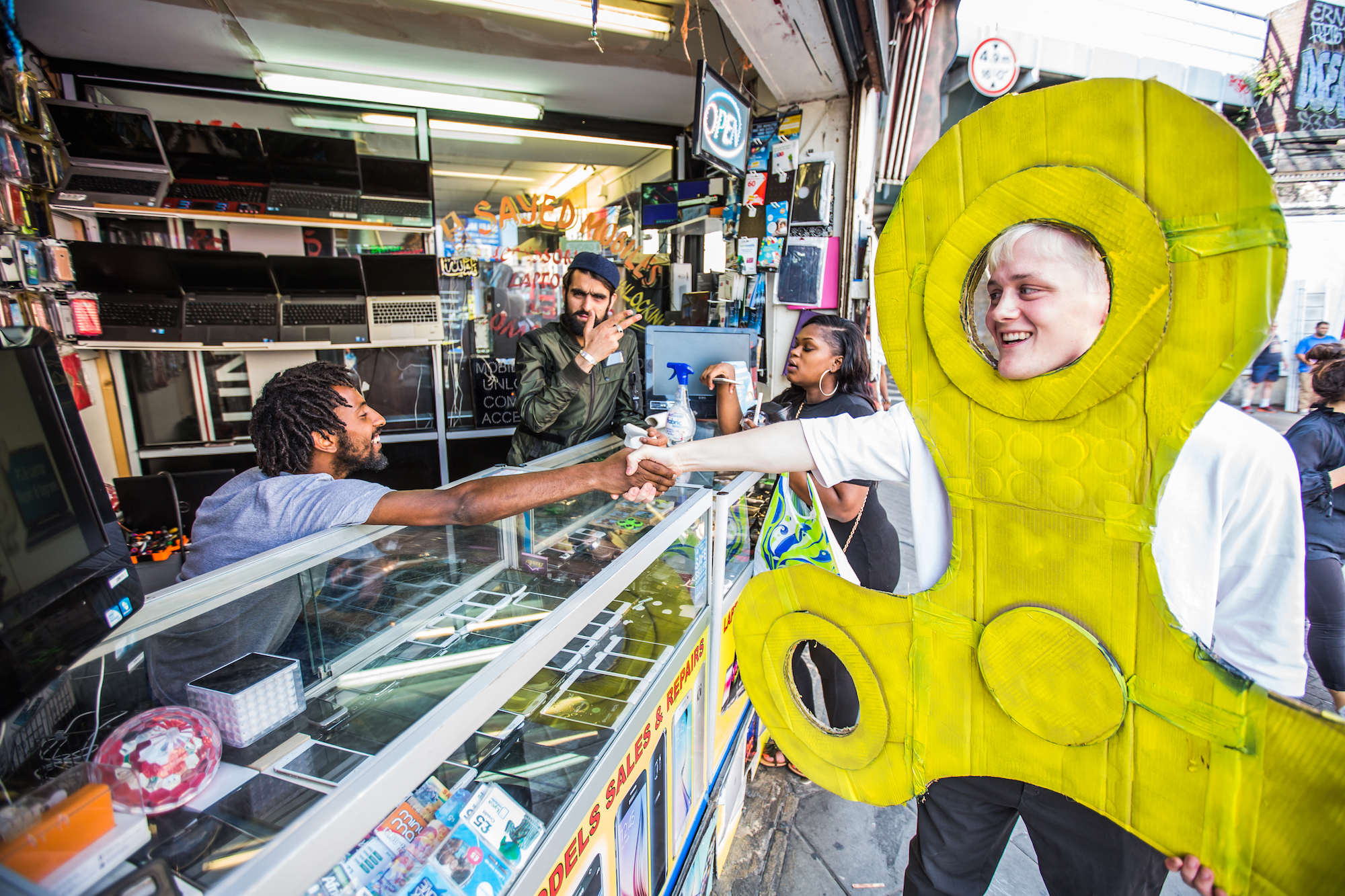
And this is true, but as everybody knows: the only way to really get these palm-sized spinners is via what they were put on this earth to do.
Spin.
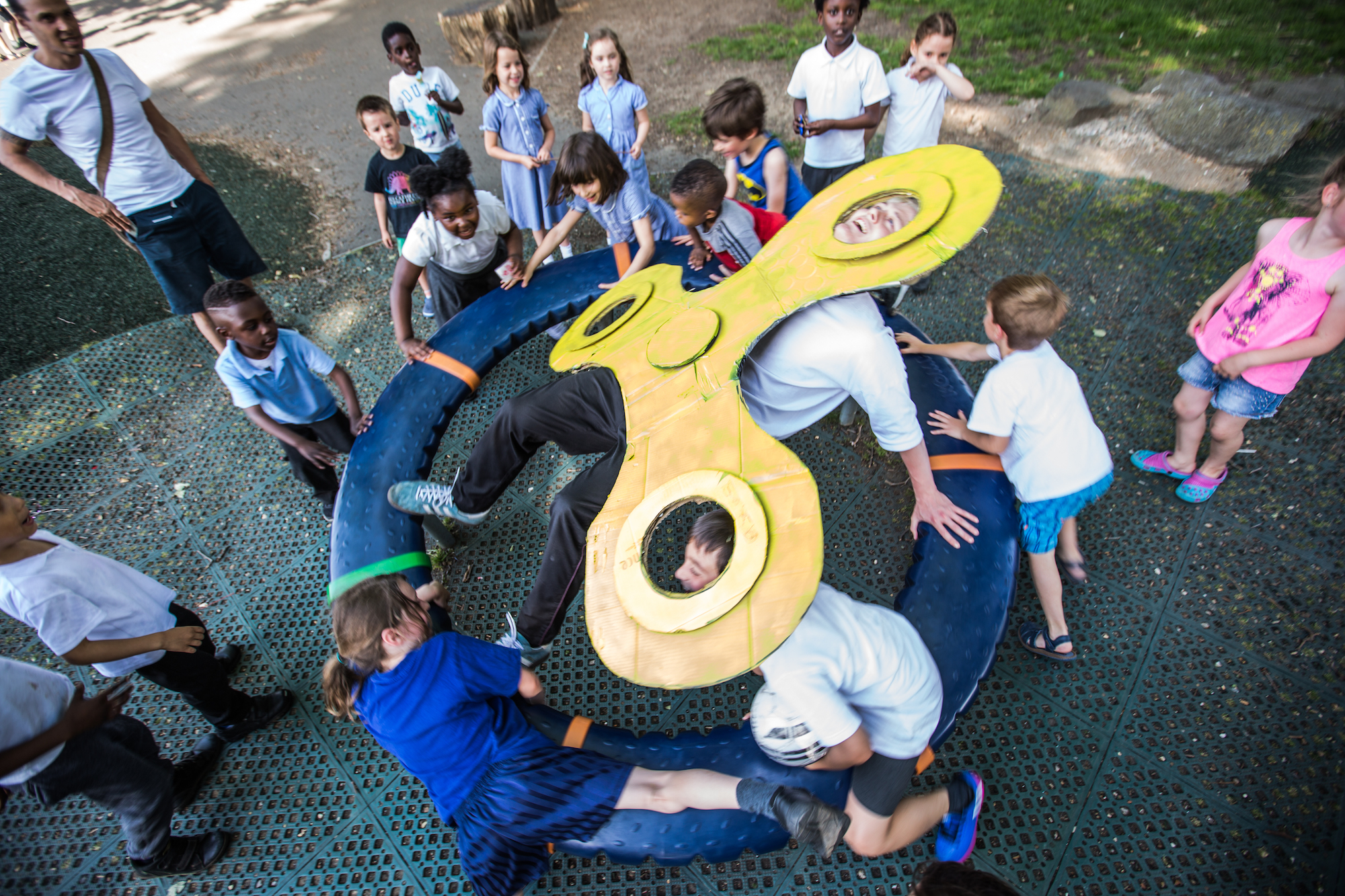
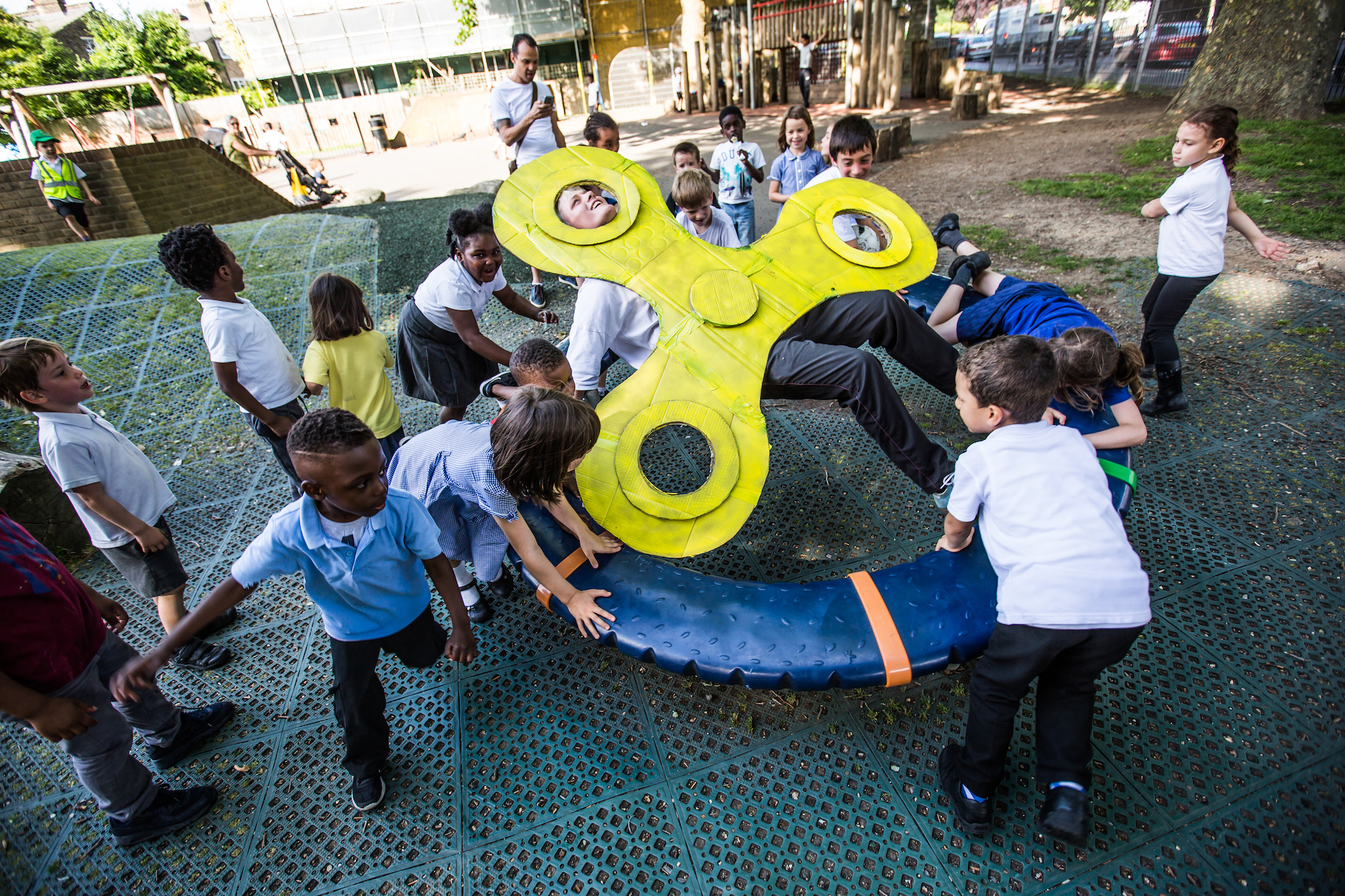

While the children yell “fidget spinner!”, hanging off it, almost pulling the actual thing apart, while their parents stand back and film the spectacle on their phones, it’s a dizzy high for a craze that you expect will dip very abruptly; the Pokemon Go of the plastic tat industry.
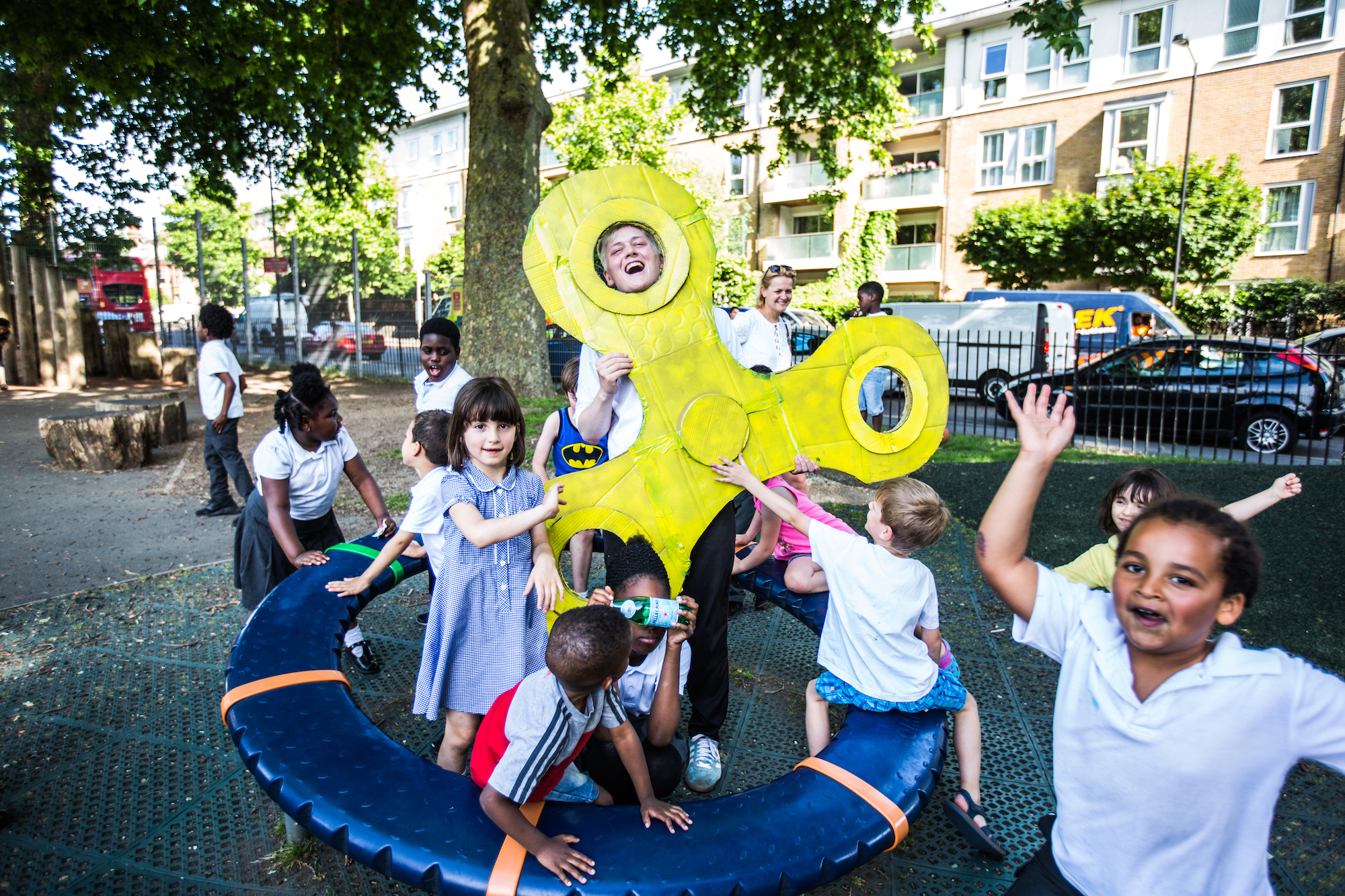
All good things come to an end for all crazes, and it seems to be a foregone conclusion that – sooner rather than later – the nation will have moved onto something entirely different.

But I’ve learned something, being a fidget spinner.
From watching gym beefcakes try to stifle their chuckling, to groups of students taking photos, I’ve experienced such intense jubilation from literally everyone I’ve passed. Children didn’t see the moonfaced person underneath the gigantic spinner: they saw something beyond human, yelling “fidget spinner’ at me continually, like I was a concept. A million miles from the solar-powered Segways and gold-plated abacuses they’re selling in Selfridges, fidget spinners are available on literally every street corner, from Grimsby to Gateshead, for £3.
I guess what I’m saying is: fidget spinners are the people’s fad. And they have the joy-inspiring, banal and affordable appeal to unite the country. At least for the next three weeks, or until everyone gets bored.
More
From VICE
-

Screenshot: Shaun Cichacki -

Jesus, Mary Magdalene, Judas Iscariot, and some fourth wheel at the Last Supper (All photos by Paige Taylor White) -

Screenshot: Bad Habit Productions -

Screenshot: Ubisoft
